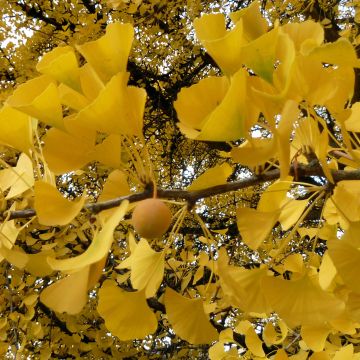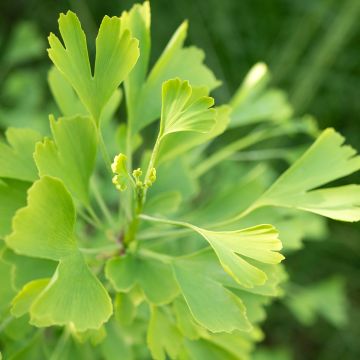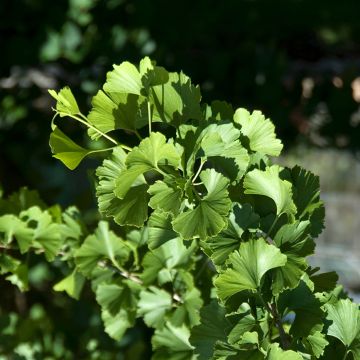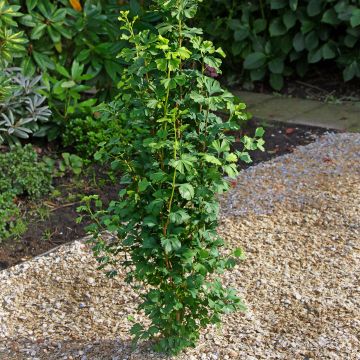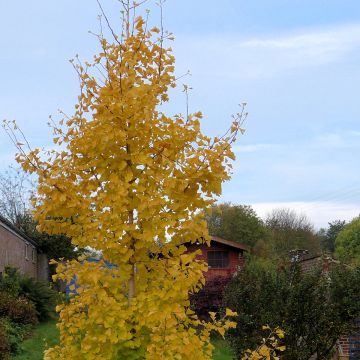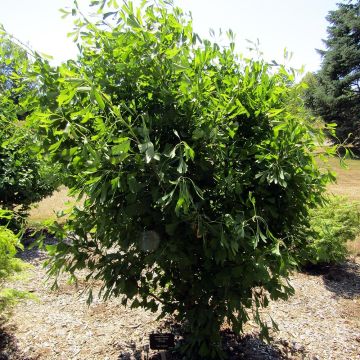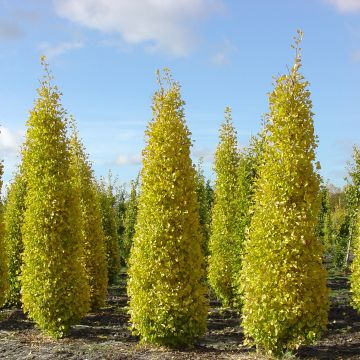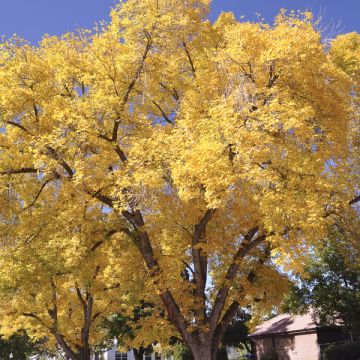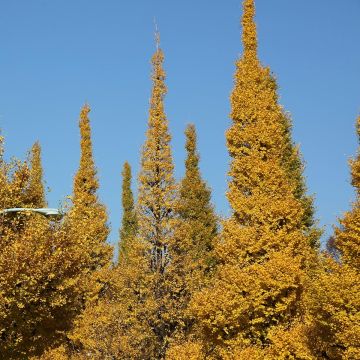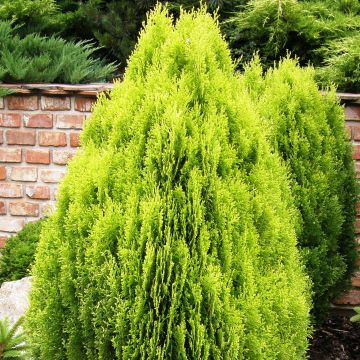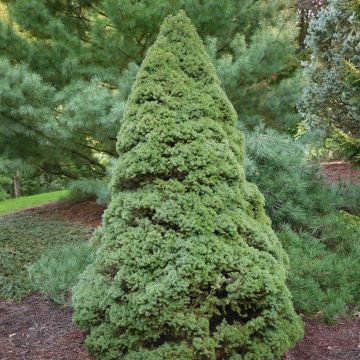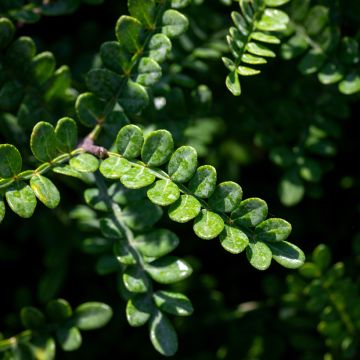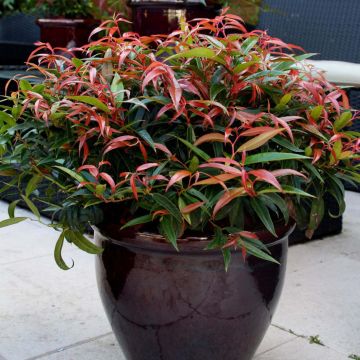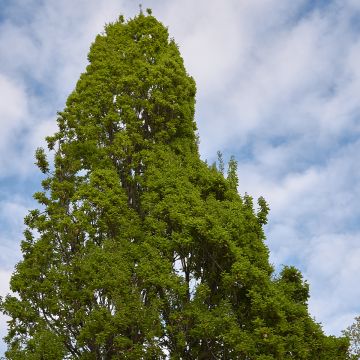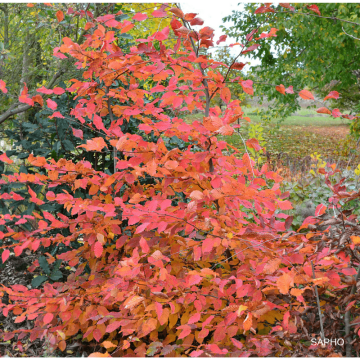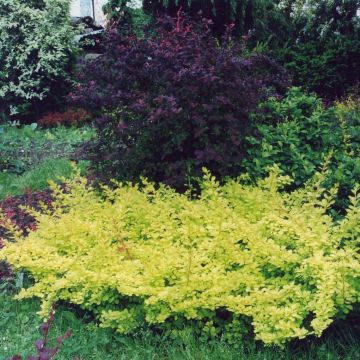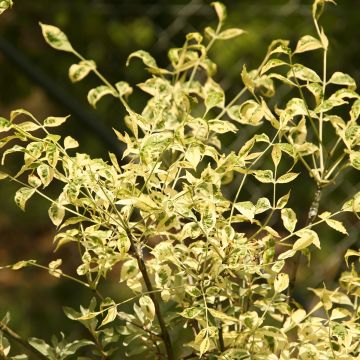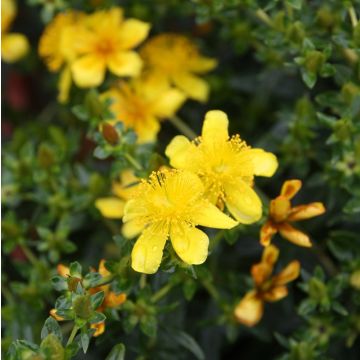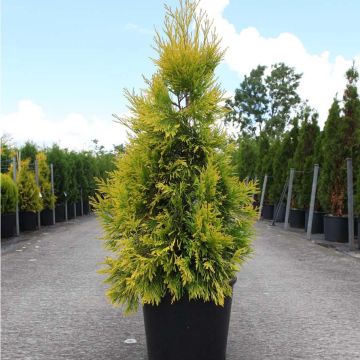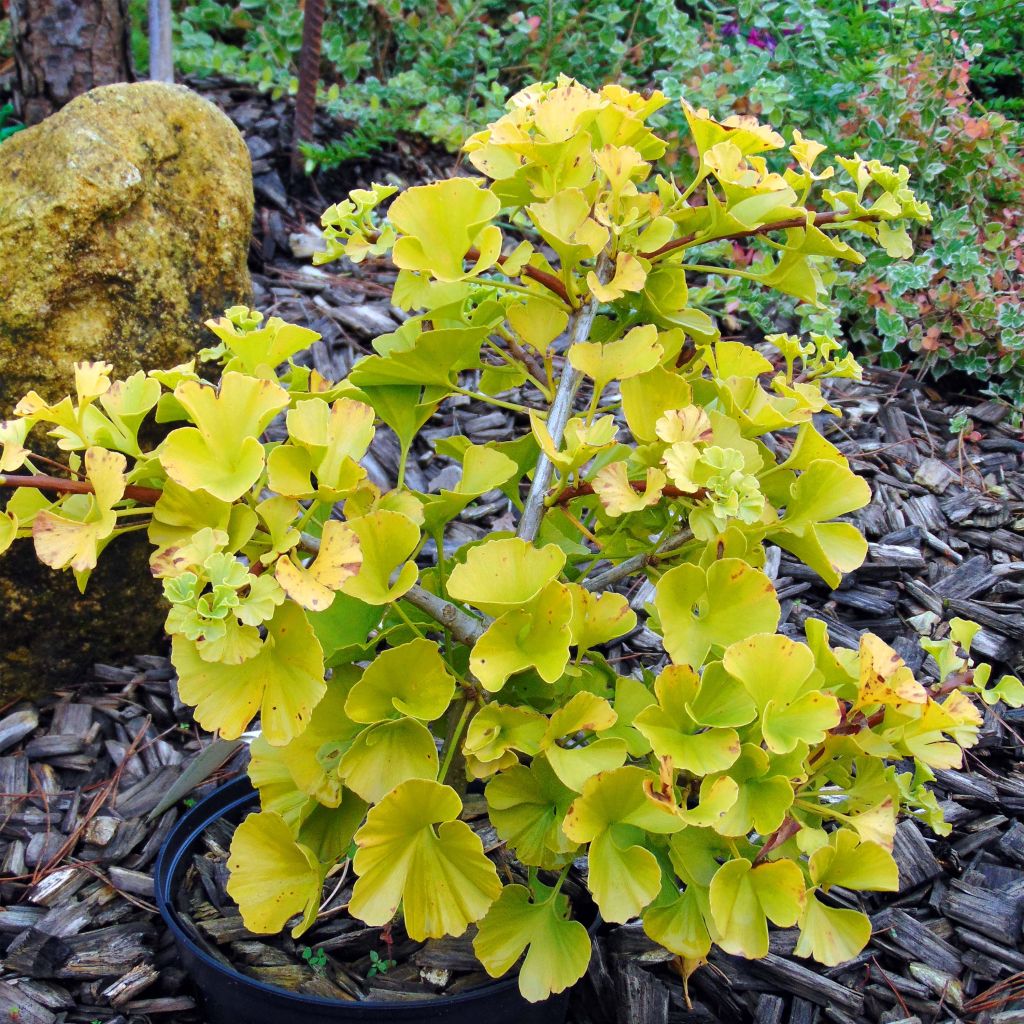

Ginkgo biloba Mariken
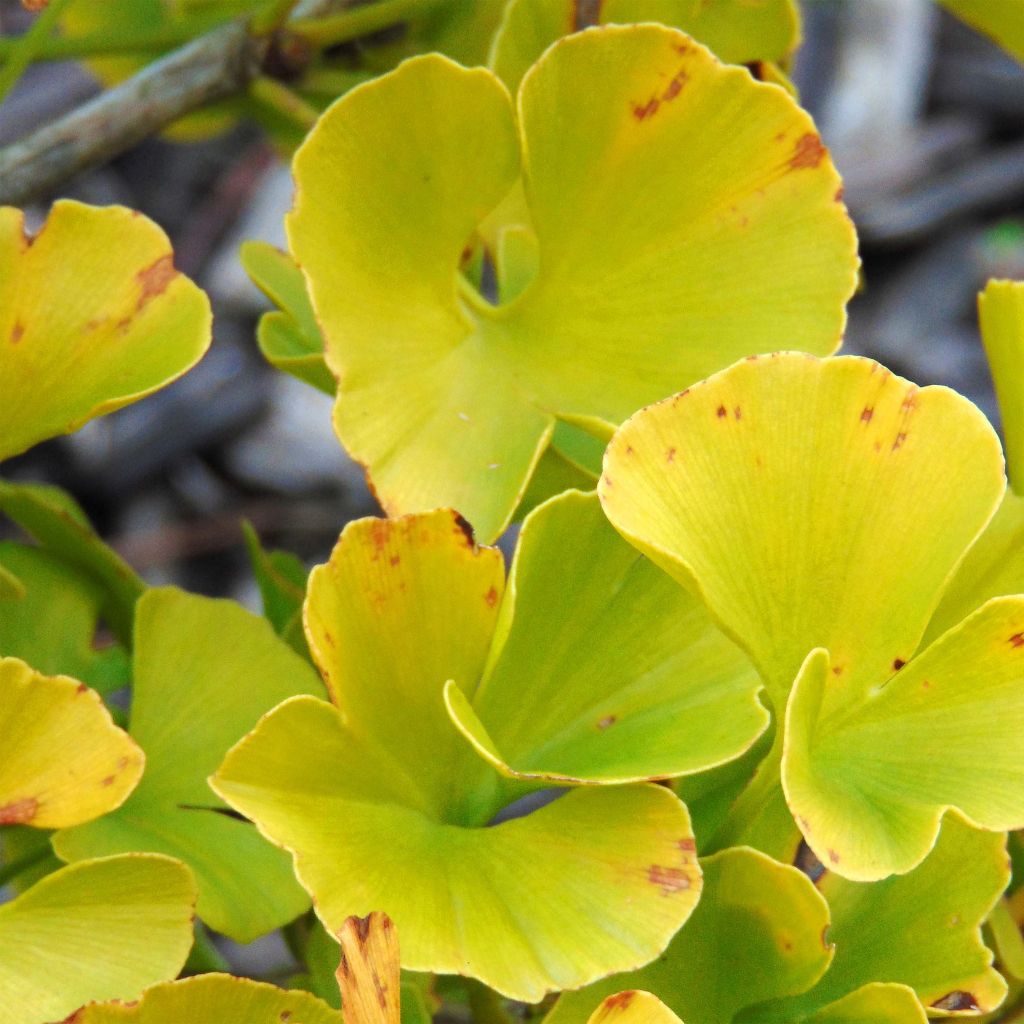

Ginkgo biloba Mariken
Ginkgo biloba Mariken
Ginkgo biloba Mariken
Maidenhair Tree, Living Fossil Tree
This item cannot be shipped to the selected country
Delivery charge from €5.90
Delivery charge from €5.90
Delivery to Corse prohibited
More information
Delivery charge from €5.90
Delivery charge from €5.90
Delivery to Corse prohibited
More information
Schedule delivery date,
and select date in basket
This plant carries a 24 months recovery warranty
More information
We guarantee the quality of our plants for a full growing cycle, and will replace at our expense any plant that fails to recover under normal climatic and planting conditions.
From €5.90 for pickup delivery and €6.90 for home delivery
Express home delivery from €8.90.
From €5.90 for pickup delivery and €6.90 for home delivery
Express home delivery from €8.90.
Delivery to Corse prohibited: UE law prohibits the import of this plant from mainland France to Corse as part of the fight against Xylella fastidiosa. Please accept our sincere apologies.
More information

Does this plant fit my garden?
Set up your Plantfit profile →
Description
Ginkgo biloba 'Mariken' allows the mythical Forty Coin Tree to enter all gardens, even the smallest ones, and even on our terraces in a large pot. This grafted variety on a stem has the appearance of a prehistoric fern. it bears a rounded and tight crown, with a weeping habit, carried at the top of a sturdy trunk. Its foliage is slightly smaller and more crinkled than that of the species, but its pretty leaves also turn golden in autumn. This visually striking small tree will thrive in the sun, in any good garden soil that is not too dry, without requiring much maintenance.
Ginkgo biloba, also sometimes called 'Maidenhair Tree' due to the shape of its leaves and the pattern of its veins resembling capillaries, is a primitive tree from the Ginkgoaceae family, which is now practically extinct. This living fossil, which does not bear flowers, normally reaches up to 24 m (78.8 ft) in height, showing an upright habit in its youth and becoming more spreading with age, measuring up to 9 m (29.5 ft) in diameter. This majestic tree, native to China, has disappeared in its natural habitat, owing its survival only to the admiration and dedication of gardeners who continue to plant it in beautiful parks.
'Mariken' is a horticultural variety introduced in the Netherlands by P. Vergeldt in 1995. It is actually a branch taken from a 'witch's broom', a cluster of abnormal branches and twigs (in this case, dwarf ones) found on a park tree, which was grafted into a slit on a more or less short stem of the Gingko biloba type. The tree will not exceed 80 cm to 1 m (2.6 ft to 3.3 ft) in all directions at 10 years, about 2.5 m (8.2 ft) after many years. Its branches are compact, and its young shoots are thick. Its light green deciduous leaves, rounded and cone-shaped, take on beautiful bluish reflections in summer, then an intense golden yellow colour at the end of the season before falling. They resemble a fan in their pattern and measure from 4 cm to 6 cm (1.6 in to 2.4 in) wide, smaller than those of the type. This beautiful tree has a spreading root system and develops quite slowly during the first 10-12 years of its life, a little faster afterwards.
Ginkgo 'Mariken' can be planted in a container near an entrance, on a terrace, or as a solitary specimen on a lawn, where it will become a focal point for much of the year. Its graphic design blends particularly well in Japanese, exotic or contemporary settings. It can also be grown with small Japanese maples, oakleaf hydrangea, and purple barberry. It is also a beautiful subject for an urban garden or a rooftop terrace.
Interestingly, despite its deciduous leaves, Ginkgo biloba is a conifer from a botanical point of view. It is a very hardy shrub. It is also very resistant. It was one of the few to survive the bombing of Hiroshima in 1945!
It is the oldest tree species found on Earth: dating back 300 million years, it has survived all the cataclysms that the Earth has experienced. This tree has been living for thousands of years in the Tianmushan Mountains in southeastern China. It was reintroduced to Europe in the 18th century. The Ginkgo is exceptionally long-lived and is also a medicinal plant, with its foliage used to reduce symptoms of Alzheimer's disease.
Ginkgo biloba Mariken in pictures
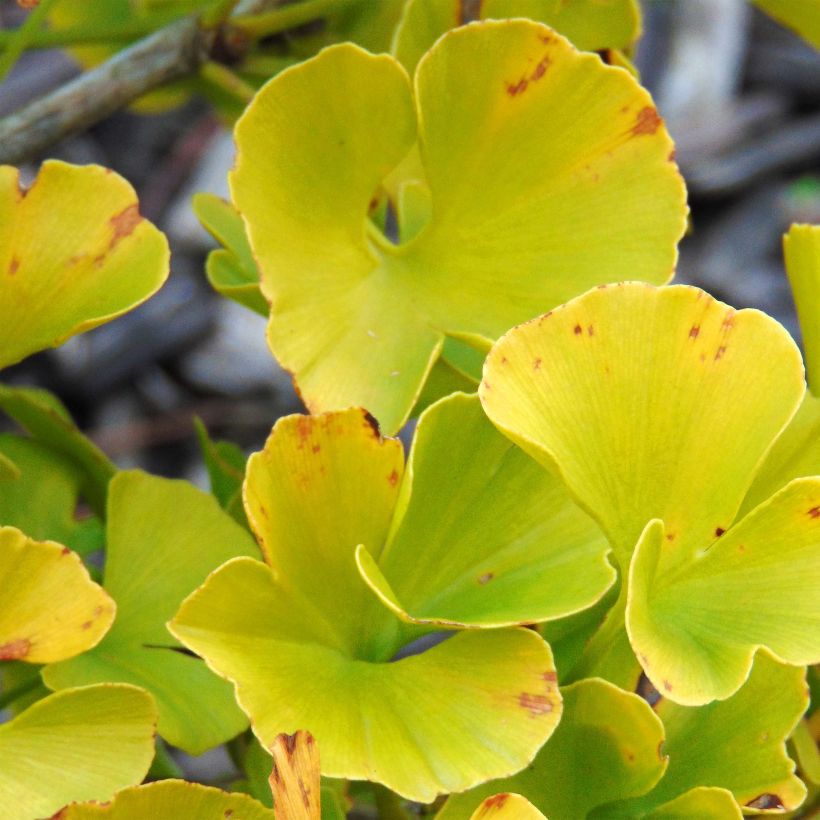

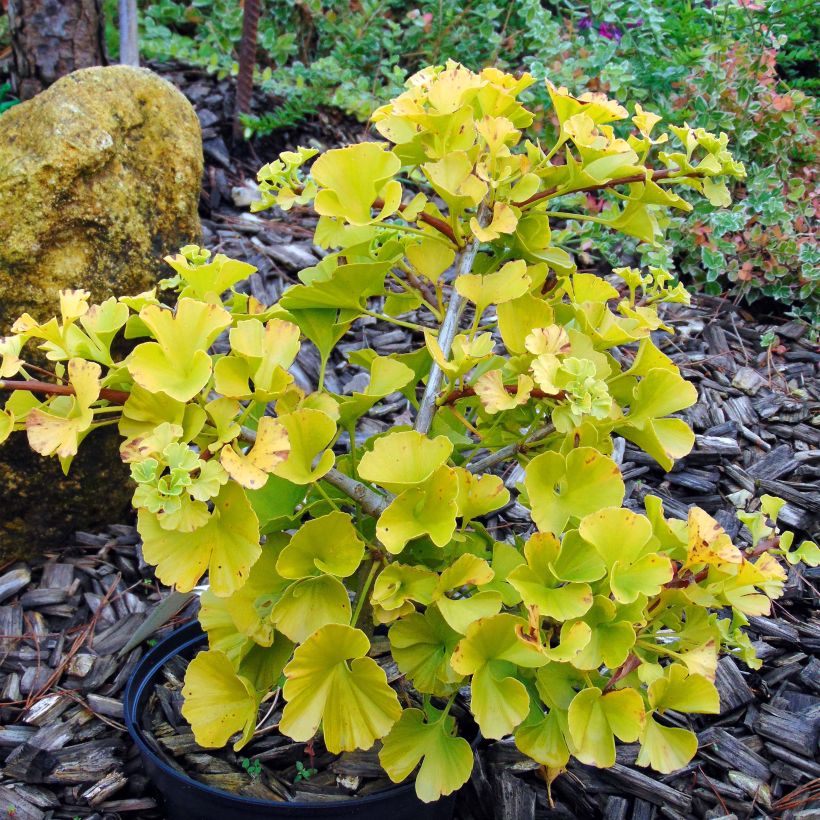

Plant habit
Foliage
Botanical data
Ginkgo
biloba
Mariken
Ginkgoaceae
Maidenhair Tree, Living Fossil Tree
Cultivar or hybrid
Other Ginkgo
Planting and care
Ginkgo Biloba 'Mariken' is a very hardy tree, resistant down to -30° C (-22° F), but it dreads excessive heat; it suffers beyond 30° C (86° F), especially if the soil is dry. It thrives in the sun in any good fertile, deep, and well-drained soil. It is also important to ensure that it does not lack water during the summer period. It tolerates soil with a tendency for limestone as long as it remains moist. In dry soil, this tree will develop very slowly. But it will also suffer in soil that is too wet and heavy, and constantly saturated with water. It is a very resistant bush that withstands urban pollution well. When planting, dig a hole deep enough and rich in humus. During the plant's dormant period, in February-March, remove rebellious, overly long, or tangled stems to maintain a balanced habit.
Planting period
Intended location
Care
Striking foliage shrubs
Haven't found what you were looking for?
Hardiness is the lowest winter temperature a plant can endure without suffering serious damage or even dying. However, hardiness is affected by location (a sheltered area, such as a patio), protection (winter cover) and soil type (hardiness is improved by well-drained soil).

Photo Sharing Terms & Conditions
In order to encourage gardeners to interact and share their experiences, Promesse de fleurs offers various media enabling content to be uploaded onto its Site - in particular via the ‘Photo sharing’ module.
The User agrees to refrain from:
- Posting any content that is illegal, prejudicial, insulting, racist, inciteful to hatred, revisionist, contrary to public decency, that infringes on privacy or on the privacy rights of third parties, in particular the publicity rights of persons and goods, intellectual property rights, or the right to privacy.
- Submitting content on behalf of a third party;
- Impersonate the identity of a third party and/or publish any personal information about a third party;
In general, the User undertakes to refrain from any unethical behaviour.
All Content (in particular text, comments, files, images, photos, videos, creative works, etc.), which may be subject to property or intellectual property rights, image or other private rights, shall remain the property of the User, subject to the limited rights granted by the terms of the licence granted by Promesse de fleurs as stated below. Users are at liberty to publish or not to publish such Content on the Site, notably via the ‘Photo Sharing’ facility, and accept that this Content shall be made public and freely accessible, notably on the Internet.
Users further acknowledge, undertake to have ,and guarantee that they hold all necessary rights and permissions to publish such material on the Site, in particular with regard to the legislation in force pertaining to any privacy, property, intellectual property, image, or contractual rights, or rights of any other nature. By publishing such Content on the Site, Users acknowledge accepting full liability as publishers of the Content within the meaning of the law, and grant Promesse de fleurs, free of charge, an inclusive, worldwide licence for the said Content for the entire duration of its publication, including all reproduction, representation, up/downloading, displaying, performing, transmission, and storage rights.
Users also grant permission for their name to be linked to the Content and accept that this link may not always be made available.
By engaging in posting material, Users consent to their Content becoming automatically accessible on the Internet, in particular on other sites and/or blogs and/or web pages of the Promesse de fleurs site, including in particular social pages and the Promesse de fleurs catalogue.
Users may secure the removal of entrusted content free of charge by issuing a simple request via our contact form.

































